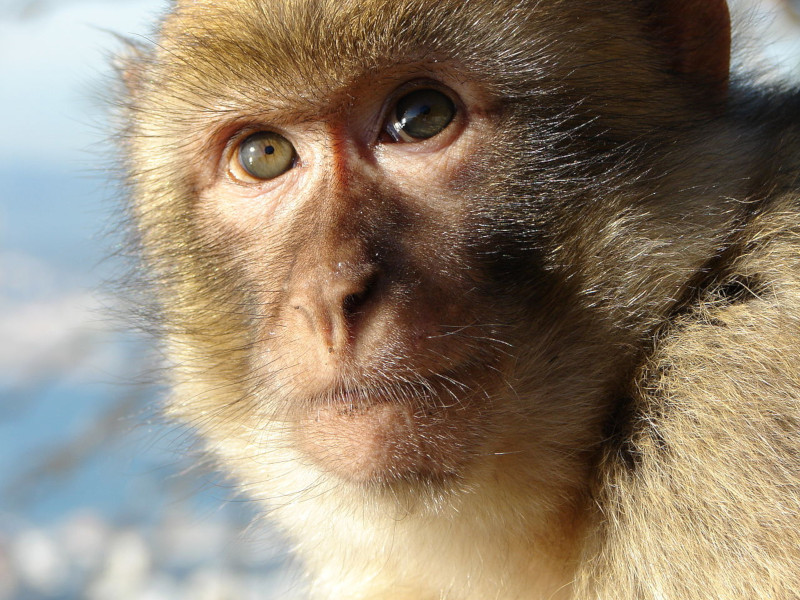
Barbary Macaque Facts
- The short term of Barbary Macaque serves as the most frequently used of the common names for one of the best known types of Old World Monkey. This truly marvelous primate does gave several other general titles, though. These include the similar name Barbary ape and magot.
- Within the scientific community, however, the marvel of Nature’s perhaps better known by its technical designation. LIke most such tags, though, that’s somewhat difficult for the typical layperson to pronounce. That’s because it bears the formal epithet of Macaca sylvanus.
- The mammal received that slightly tongue-twisting appellation due to the efforts of Carl Linnaeus himself. The highly esteemed Swedish botanist and zoologist accomplished the first recorded recognition of it as a separate and distinct species. He achieved that in 1758.
- The species continues to be of particular interest to researchers due to a specific behavior. In this unique species, males play an atypical role in the rearing of their young. Because of typically uncertain paternity, as a general rule, males play an integral role in raising all infants.
- Regrettably, the overall population of the magnificent Barbary Macaque appears to be steadily diminishing. Only one particular, isolated concentration of its numbers seems to be stable, at least for the moment. The others, however, continue to rapidly decline in numbers.
- The IUCN therefore presently lists the incredible mammal as Endangered on its Red List. It faces multiple threats to its continued existence as a species, like all forms of life on earth today. In its case, as in theirs, its greatest danger comes from habitat loss and climate change.
Related Articles
Capuchin
Barbary Macaque Physical Description
The captivating Barbary Macaque possesses a truly striking and impressive physical appearance that quickly grabs one’s interest. However, the impressiveness does not occur as a result of physical size. That’s because this particular animal ranks as only a moderate-size member of its genus.
The impressively evolved creature also displays a relatively moderate degree of the physiological trait of sexual dimorphism, following a pattern of development common among its kindred around the world. In this particular animal, though, that trait manifests itself in more than one manner.
Size, for instance, ranks as one of these methods of distinction. The male of this amazing species typically attains a slightly greater body length than that of the female. He typically reaches a length measuring roughly 25 in (63.4 cm). The female, meanwhile, only averages about 21.9 in (55.7 cm).
Its males, in the meantime, achieve a mean weight equaling approximately 32 lb (14.5 kg). The females, however, develop as significantly lighter in terms of their body mass. Astonishingly, this gender of the animal only averages 21.8 lb (9.9 kg). While the trait’s not uncommon, this degree is.
Nature didn’t stop there, though. The intriguing Barbary Macaque also displays gender-based differences in one other manner. This variation presents itself in the length of the tail. That holds true because the tail of most males develops as slightly more prominent than that of the female.
Otherwise, however, the genders of this uniquely evolved creature appear generally the same. The animal’s fur possesses an overall color consisting of yellowish-brown to gray, though the underside appears somewhat lighter. Yet, the face of the animal appears as a very dark pink in color.
- Kingdom: Animalia
- Phylum: Chordata
- Class: Mammalia
- Order: Primates
- Family: Cercopithecidae
- Genus: Macaca
- Species: M. sylvanus
Barbary Macaque Distribution, Habitat, and Ecology
Lamentably, the gorgeous Barbary Macaque developed as indigenous to only a very small portion of the globe. Its population also appears disjointed. Both of these hold true due to the fact that this animal only inhabits a small section of the northern part of Africa, and a tiny part of Europe.
More precisly, the stunning mammal’s only known to currently inhabit parts of the countries of Algeria and Morocco, and the territory of Gibraltar. Historically, however, it did once also appear in the what’s now the nation of Tunisia. Most experts now believe it to be extinct in that region.
Most fortunately for those who appreciate Nature, the amazing small primate thankfully appears to be highly adaptable to differing conditions. That’s the standard opinion due to the fact that the remarkable creation of evolution’s been observed in numerous types of habitats across its range.
Within the borders of Gibraltar, the species lives in regions mainly consisting of various rocky cliffs and gorges. Altitude also plays a prominent factor in its placement, at least in this specific part of its territory. It’s typically found there at altitudes ranging from 1,300 – 8,500 ft (400 – 2,600 m).
In the rest of its range, though, it’s most concentrated in the Rif and Atlas Mountains. Within that range, the animal typically appears in an incredible total of four different ecosytems. These zones of habitation consist of local grasslands, numerous temperate forests, scrub, and even rocky ridges.
Technically omnivorous, the amazing Barbary Macaque displays a moderately flexible diet. It primarily consumes a variety of local leaves, fruits, seeds, bark, and roots. Nevertheless, it does occasionally augment this vegetarian fare with small invertebrates it catches opportunistically.
Like most primates, it’s also highly social. The species congregates in small groups, usually being diurnal in terms of activity. These groupings range in number from 10 – 100 individuals, with 24 – 60 being the most common. It also displays a small degree of the practice of dominance hierarchy.
Like most forms of life, it also has its share of natural predators. Traditionally, this included leopards, though experts now believe these wild felines to be extinct in the regions it inhabits. Its principal natural threat now consists of Golden Eagles, which most often preys on the very young.
Species Sharing Its Range
Check out our other articles on Earth’s Many Magnificent Marsupials, Pinecone Fish, Madeira, Korean Fir, Laotian Giant Flying Squirrel, Six-Spotted Fishing Spider, Wood Frog, Green Iguana
